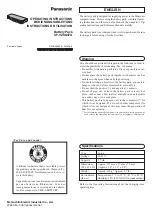7. Fitting step, BiCROS mode:
It is possible to adjust the balance of sound coming from the CROS transmitter
versus the receiving hearing aid where the microphone is by default on.
The Balance trimmer adjusts the CROS transmitter input level in 2 dB steps.
As a default, it is set to 0, meaning equal sound from the transmitter and
receiver, respectively, entering the ear canal.
The receiver input level is fixed but can be adjusted in the overall gain in the
Fine‑tuning tab.
8. End Fitting step:
It is not possible to configure buttons and indicators for the CROS transmitter,
but under the Operate Push Button tab, it is possible to see how buttons are
configured on the transmitter.
Be aware that beeps are configured to be High Frequency for transmitter
alerts, whereas receiving hearing aid alerts are Medium Frequency by default.
If no changes to beeps are made by the hearing care professional, beeps
will sound different from the transmitter versus receiver to help the
patient distinguish between the two more easily.
9. Save and Exit.
Genie 2 features without CROS transmission
In Feedback Analyzer, In‑situ Audiometry and Technical Measurements, CROS
transmission is not available so as not to interfere with measurements.
CROS transmission continues after exiting these functions in Genie 2.
Oticon CROS fittings and Real Ear Measurements (REM)
To objectively verify how the CROS transmitter is functioning and overcoming
the head shadow effect, it is possible to run a REM measurement within the REM
AutoFit tool in Genie 2 with the transmitter actively streaming.
No specific REM AutoFit CROS protocol exists, but a general CROS REM verification
guide is available from Oticon.
If an active transmitter is not desired during REM, it must be muted on the
physical device.
Oticon CROS –
Quick Fitting Guide
45
44


















